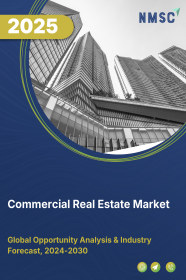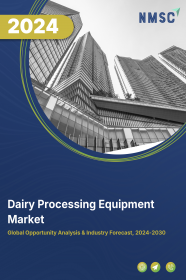
UK Elevator Market by Type (Passenger Elevator, Freight Elevator, and Others), by Technology (Traction, and Hydraulic ), by Services (New Installation, and Others), by Capacity (Less than 1500 kg, and Others), by Speed (Less than 1 M/S, and Others), by Deck Type (Single Deck, and Double Deck), by Designation control (Smart, and Conventional), by Door Type (Automatic, and Manual), By Application (Residential, Commercial, and Industrial)- Opportunity Analysis and Industry Forecast, 2025 –2030.
Industry: Construction & Manufacturing | Publish Date: 03-Oct-2025 | No of Pages: 129 | No. of Tables: 186 | No. of Figures: 131 | Format: PDF | Report Code : CM1613
Market Definition
According to NMSC, the UK Elevator Market size in 2024 was USD 3577.24 million, and is estimated to reach USD 4078.62 million in 2025 and is projected to reach USD 6397.47 million by 2030 with a CAGR of 9.42%. According to NMSC, in term of volume the market size was 11.22 thousand units in 2024, 12.60 thousand units in 2025 and is projected to reach 20.99 thousand units by 2030 with a CAGR of 10.75%. The elevator market represents a dynamic sector encompassing the design, manufacturing, installation, and maintenance of elevator systems. From conventional traction elevators to cutting-edge smart solutions, this market offers a diverse array of vertical transportation choices customized to suit the distinct requirements of various buildings and infrastructure projects. Stakeholders within the elevator market include manufacturers, suppliers, contractors, architects, building owners, and facility managers. Manufacturers continuously innovate to enhance elevator performance, safety, and sustainability, while suppliers provide critical components and materials necessary for system construction.
Additionally, sustainability considerations, including energy efficiency and material recyclability, are increasingly integral to elevator design and operation. They align with broader environmental objectives and sustainable building practices. Thus, the elevator market is a cornerstone of vertical mobility as elevators enhance functionality, accessibility, and sustainability within buildings and urban landscapes worldwide.
Surge In Urban Regeneration And Mixed-use Developments Driving New Installations
The UK is witnessing a rapid wave of urban regeneration projects, particularly in major cities such as London, Manchester, Birmingham, and Leeds. These projects are transforming old industrial zones and underutilized urban spaces into high-density residential, commercial, and mixed-use developments. With vertical construction becoming the norm in these redeveloped areas, the demand for advanced elevator systems is rising sharply. Elevators are no longer just a convenience but a compliance requirement, meeting modern accessibility, safety, and sustainability regulations. Additionally, large-scale housing programs and infrastructure investments by local councils are further accelerating elevator installations, particularly in social housing and public facilities, reinforcing long-term market demand.
Rising Demand For Modernization Driven By Net-zero And Safety Compliance
A substantial portion of the UK’s elevator stock is reaching the end of its operational life, creating robust demand for modernization solutions. Building owners are prioritizing upgrades that improve energy efficiency, reduce operational costs, and comply with the UK’s net-zero targets for carbon emissions. Modernization projects are increasingly incorporating regenerative drives, AI-powered predictive maintenance, and destination control systems to enhance passenger flow and minimize downtime. Additionally, new fire safety and accessibility regulations following Grenfell-related reforms are prompting landlords and developers to ensure compliance, making modernization a key growth driver in both residential and commercial segments.
High Cost And Logistical Challenges Of Retrofitting In Aged Building Stock
Despite the strong need for modernization, retrofitting elevators in older buildings remains a major challenge due to high costs, technical complexity, and logistical disruption. Many mid-rise and heritage buildings in the UK lack adequate space for shafts or lift pits, requiring extensive structural alterations and regulatory approvals before installation. These challenges are amplified in densely populated residential blocks where relocation or phased construction adds to project timelines and costs. As a result, many property owners delay or avoid upgrades, which slows overall market penetration, particularly in the private rental sector and older council housing stock.
Integration Of Smart Elevators With Building Automation And Esg Goals
The growing adoption of smart building technologies presents a major opportunity for elevator manufacturers and service providers in the UK. IoT-enabled elevators that integrate seamlessly with Building Management Systems (BMS) and ESG reporting tools are becoming increasingly attractive to developers and asset managers. These systems offer real-time performance monitoring, predictive maintenance, and energy optimization, aligning with corporate sustainability strategies and green building certifications such as BREEAM. With the UK’s focus on connected infrastructure and smart cities, the demand for elevators that enhance operational efficiency while supporting ESG compliance is expected to rise significantly, creating new revenue streams through service contracts and digital solutions.
Competitive Landscape
The UK elevator market comprises various market players, such as Otis Elevator Company, KONE Corporation, Schindler Group, TK Elevator, Mitsubishi Electric Corporation, Lifton Home Lifts, Cibes Lift, Lifton Home Lifts, Stannah Lifts Holdings Ltd, Toshiba Elevator and Building Systems, Kleemann Lifts UK, Alimak Group, Aritco Lift AB, Orona Group, Gartec Lifts, and others.
UK Elevator Market Key Segments
By Type
-
Passenger elevator
-
Freight elevator
-
Others
By Technology
-
Traction
-
Machine Room [MR] Traction
-
Machine Roomless [MRL] Traction
-
-
Hydraulic
By Service
-
New Installation
-
Maintenance
-
Modernization
By Capacity
-
Less than 1500 kg
-
1500 to 2500 kg
-
2501 to 4000 kg
-
More than 4000 kg
By Speed
-
Less than 1 M/S
-
Between 1 to 4 M/S
-
More than 5 M/S
By Deck Type
-
Single Deck
-
Double Deck
By Designation Control
-
Smart
-
Conventional
By Door Type
-
Automatic
-
Manual
By Application
-
Residential
-
Low Rise: 10 floors
-
Mid Rise: 11-30 floors
-
High Rise: above 30 floors
-
Villa/home
-
-
Commercial
-
Airport
-
Hotel & Hospitality
-
Leisure and Education
-
Marine & Port Facilities
-
Medical & Healthcare
-
Multiuse Buildings (Mixed-Use)
-
Retail & Shopping Centers
-
Public Transportation Hubs
-
Office Buildings
-
Low Rise: 10 floors
-
Mid Rise: 11-30 floors
-
High Rise: above 30 floors
-
-
-
Industrial
Key Players
-
Otis Elevator Company
-
KONE Corporation
-
Schindler Group
-
TK Elevator
-
Mitsubishi Electric Corporation
-
Lifton Home Lifts
-
Cibes Lift
-
Lifton Home Lifts
-
Stannah Lifts Holdings Ltd
-
Toshiba Elevator and Building Systems
-
Kleemann Lifts UK
-
Alimak Group
-
Aritco Lift AB
-
Orona Group
-
Gartec Lifts
REPORT SCOPE AND SEGMENTATION:
|
Parameters |
Details |
|
Market Size in 2025 |
USD 3577.24 Million |
|
Revenue Forecast in 2030 |
USD 4078.62 Million |
|
Growth Rate |
CAGR of 9.42 % from 2025 to 2030 |
|
Analysis Period |
2024–2030 |
|
Base Year Considered |
2024 |
|
Forecast Period |
2025–2030 |
|
Market Size Estimation |
Million (USD) |
|
Growth Factors |
|
|
Companies Profiled |
15 |
|
Market Share |
Available for 10 companies |
|
Customization Scope |
Free customization (equivalent up to 80 working hours of analysts) after purchase. Addition or alteration to country, regional, and segment scope. |
|
Pricing and Purchase Options |
Avail customized purchase options to meet your exact research needs. |

















 Speak to Our Analyst
Speak to Our Analyst

























